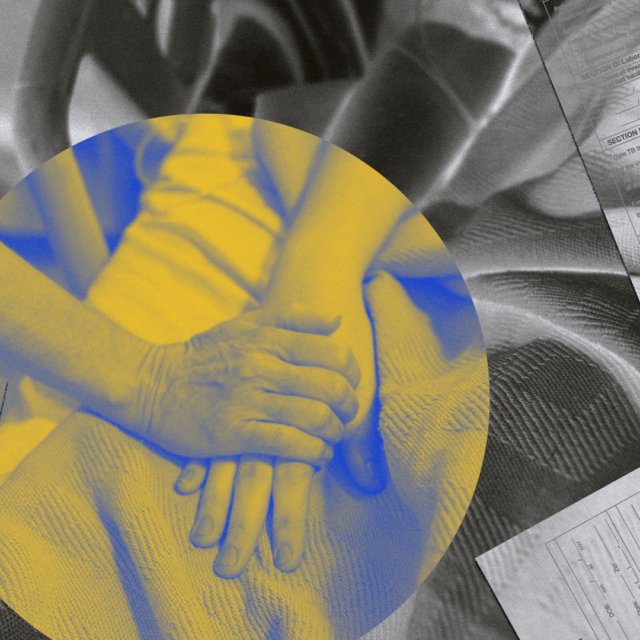Methodological Note: A More Complete Picture
The Contours of Gun Injury in the United States
This Methodological Note is a companion to A More Complete Picture: The Contours of Gun Injury in the United States, which provides estimates of nonfatal gun injuries in the US and underlines the importance of understanding the contours of these injuries—where, to whom, and how often they occur—for developing solutions.
Data Sources
Data and analysis of nonfatal firearm injuries are derived from two datasets in the Healthcare Cost and Utilization Project (HCUP) of the US Department of Health & Human Services’ Agency for Healthcare Research and Quality (AHRQ). Everytown purchased restricted files from AHRQ. Emergency department discharges are from the Nationwide Emergency Department Sample (NEDS). Unweighted, the NEDS dataset includes approximately 33.5 million hospital encounters that started in the emergency department, including 8 million for injuries. For 2017, 984 hospitals across 36 states and Washington, DC participated in NEDS. Inpatient (admitted) discharges are from the National (Nationwide) Inpatient Sample (NIS).1AZ, AR, CA, CO, CT, DC, FL, GA, HI, IL, IN, IA, KS, KY, ME, MD, MA, MI, MN, MS, MO, MT, NE, NV, NH, NJ, NY, NC, ND, OH, OR, RI, SC, SD, TN, TX, UT, VT, WI, and WY. Unweighted, the NIS dataset includes approximately 7 million hospital admissions, including 1 million injury-related hospital admissions. For 2017, 47 states and Washington, DC participated in NIS.2AK, AZ, AR, CA, CO, CT, DE, DC, FL, GA, HI, IL, IN, IA, KS, KY, LA, ME, MD, MA, MI, MN, MS, MO, MT, NE, NV, NH, NJ, NM, NY, NC, ND, OH, OK, OR, PA, RI, SC, SD, TN, TX, UT, VT, VA, WA, WV, WI, and WY. Everytown calculated rates of nonfatal firearm injuries per 100,000 population using the population denominator file that accompanied these HCUP datasets.
Fatal injuries (deaths) are as reported by the Centers for Disease Control (CDC) through its Wide-ranging Online Data for Epidemiologic Research (WONDER) tool using the underlying cause of death compressed files, which are drawn from death certificates. While CDC WONDER includes data through 2018, for consistency, all data presented in this report are from 2017, the most recent year for which all three datasets are available.
NEDS and NIS datasets include information on sex, age, hospital Census region, patient residence rural-urban classification, patient residence ZIP code median household income quartile, discharge disposition, admission month, and admission day of the week. The NIS dataset also includes information on the race and ethnicity of patients, risk of mortality, and severity of injury.
Injury Coding
Everytown extracted hospital discharge records for patients with firearm-related injuries using the National Center for Health Statistics’ International Classification of Diseases, Tenth Revision, Clinical Modification (ICD-10-CM) codes for initial encounters related to firearm discharges. Beginning with the 2017 HCUP datasets, ICD-10-CM codes for external cause of injury are included in the diagnosis codes; firearm injuries were extracted from all possible diagnoses (e.g., up to 35 unique codes), regardless of other diagnoses reported. Injuries as a result of firearm malfunction or injuries of any intent from gas, air, or spring-operated guns, paintball guns, and rubber bullets were excluded. Because the NEDS and NIS are both cross-sectional snapshots, to avoid double counting the same injury over time, only the injuries coded as initial encounters were included. Injuries coded as subsequent encounters or sequelae were not counted. If transfers from an emergency department to a hospital with an inpatient facility were incorrectly coded as a subsequent encounter, the estimates here may undercount the burden of inpatient firearm injuries. To avoid double counting reported fatal injuries, firearm-related hospital discharges that resulted in death in the emergency department or as an inpatient were excluded.
ICD-10-CM codes are categorized according to injury intent: assault (including assault by terrorism), self-harm (from an attempted suicide), legal intervention (shootings by police), injuries which were considered unintentional, and injuries where the intent was undetermined.3Included ICD-10 codes: W32, W33, W34.00, W34.09, W34.10, W34.19, X72, X73, X74.8, X74.9, X93, X94, X95.8, X95.9, Y22, Y23, Y24.8, Y24.9, Y35.001-Y35.023, Y35.41-Y35.093, Y38.4. The larger ICD-10-CM external injury category for legal intervention includes operations of war and military operations; however, the counts reported here are only for legal intervention involving firearm discharge where a law enforcement officer, bystander, or suspect was injured. ICD-10-CM codes also include information as to whether the gun was a handgun, long gun, or unspecified. As with other studies that solely used ICD coding to classify injury intent, the findings of intent distribution may not accurately reflect the true distribution of nonfatal firearm injuries. In cases where the intent of a shooting wound is unclear, and in the absence of affirmative documentation on the incident, medical coders will often mark the cause of injury as “unintentional.” As a result, the HCUP estimates may over count unintentional injuries and under count assault and self-harm injuries. While the estimates by intent differ from the estimates in the CDC’s surveillance of firearm injuries, the CDC estimates is based on data collected from a sample of <1% of the hospitals across the US compared to the 20% included in HCUP data.
Nonfatal Firearm Injuries by State
The national files for HCUP do not provide nonfatal injuries by state. Some files are available for purchase from states (State Inpatient Discharge and State Emergency Department Discharge files), however, the availability is less complete than the participation in the national sample and purchases for each state can cost thousands of dollars. The HCUPnet online system provides census counts of hospital discharges from selected states, but the system does not currently work with ICD-10-CM data so the most recent year is 2014 and the results include patients who died in the hospital (thereby double counting fatal injuries).
In order to estimate nonfatal firearm injuries by state, Everytown worked with David I. Swedler, Ted R. Miller and other researchers at the Pacific Institute for Research and Evaluation (PIRE). The researchers adopted a hybrid approach: predicting 2017 counts based on trends from 2008 to 2016, if available for the state through HCUPnet, or from a limited number of state-level files that had been purchased and predicting 2017 counts for all other states based upon regression modeling. NEDS records are categorized by the four census regions (i.e., Northeast, Midwest, South, and West) and NIS records by the nine census divisions (i.e., New England, Middle Atlantic, South Atlantic, East North Central, East South Central, West North Central, West South Central, Mountain, and Pacific); these multi-state totals were used to bound and validate the state-level estimates by intent. Full methods have been submitted to a peer-reviewed publication.
Regression modeling was used to examine, by intent and by state, the best fit from predictors that included the regional case fatality rate, the regional proportion of emergency department compared cases to inpatient for nonfatal injuries, the proportion of household firearm ownership, the proportion of state population in selected age groups (e.g., 18 to 24 for assault and 65 and older for self-harm), proportion of the state population in urban areas, relative state unemployment rate, relative state poverty rate, personal income per capita, state violent crime and property crime rates, and alcohol consumption per capita.
Everytown Research & Policy is a program of Everytown for Gun Safety Support Fund, an independent, non-partisan organization dedicated to understanding and reducing gun violence. Everytown Research & Policy works to do so by conducting methodologically rigorous research, supporting evidence-based policies, and communicating this knowledge to the American public.



